Infrastructuring Community Care
Finding opportunities for technological intervention with a community of Health Workers in Channapatna, India.
Reflections from the field
In this chapter, I focus on the use of theatre-based methods for ideation in technology design
in the GenderIT.org website
I co-led this project, along with Naveen Bagalkot, and in collaboration with Maya Health, an NGO that has created a network of Health Navigators to serve the needs of access to healthcare in rural communities in and around Channapatna, India. This project was a collaboration between MA students at Srishti Manipal Institute of Art, Design and Technology and the NGO, when they released tablets to support the work of the Health Navigators. Our entry point into the project was the use of design thinking and creative pedagogies to understand how technology could be part of the Health Navigators' routines beyond playing a utilitarian role. In other words, the research question aimed to open opportunities for socio-technical innovation, more than the design of software that could be installed in the tablets. Broadly, we studied the Navigators' life stories and routines, explored the ways in which they record and manage information, ideated uses of the tablets using methods of enactment and low-cost prototyping, and created a route for the NGO to implement technological solutions that both contribute to making some processes more efficient, as well as support the workers as entrepreneurs. The specific opportunity we identified is related to the management of dietary information.
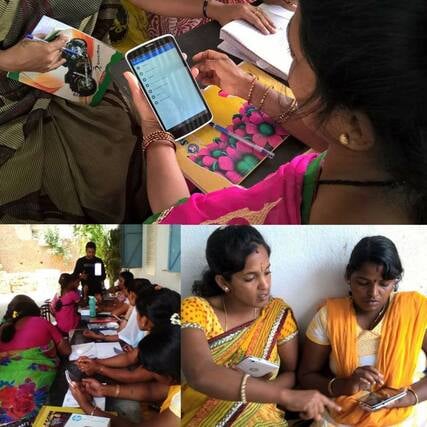

The design process, creative participation, co-creation:
Aiming to think about technology as an experience, and of users as co-creators of digital platforms, we spent weeks in trust-building exercises, where the Health Navigators could meet us (facilitators and students) and their peers through visual exercises, storytelling and dialogue. We then moved into exercises that helped us think about the roles of information management within their work. Health Navigators provide advice to patients in their homes, manually recording data such as blood pressure, sugar levels, eating habits, and more. We recreated these meetings, to see how they managed information and inquired about the data they need to better serve the needs of patients. We began discussing the challenges of recording changes in diet and how to provide the best dietary advice.
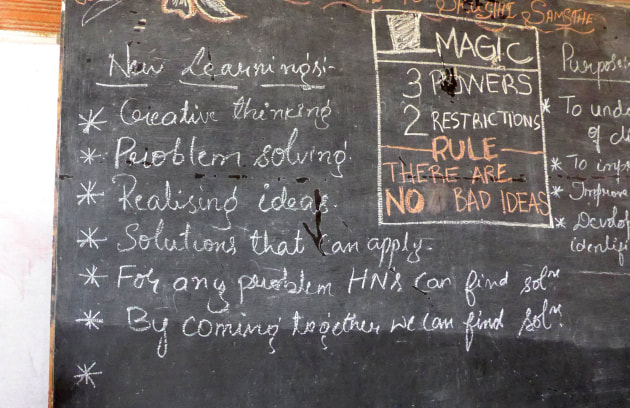

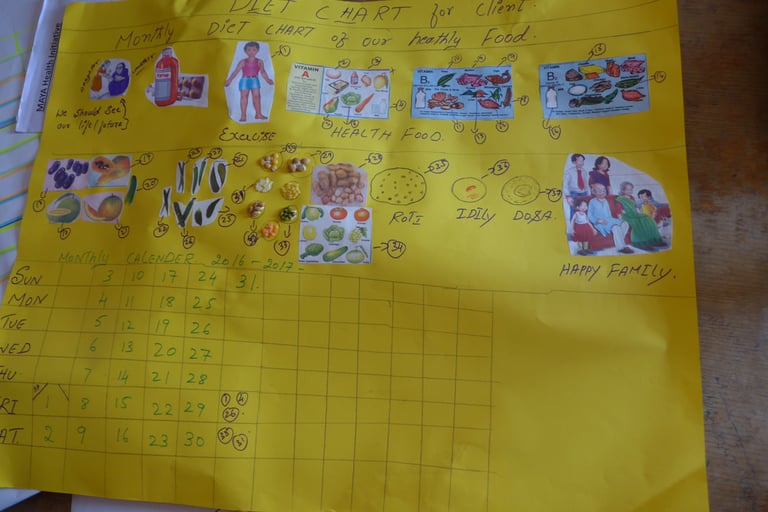



The images above correspond to a dietary chart prototyped by a woman from the community. They created this outside our sessions, using materials such as lentils and grains to talk about the different types of food they normally consume, and how they assign a value to each, to then speculate about how this visualization format could lead to making decisions about dietary advice. This was a key moment in the project, since it demonstrated that our design-led work provided them with enough creative confidence to propose this dietary chart to the group, and it planted the seed for what later became a larger ecosystem of dietary information management. Apart from food-specific data, there is also a narrative associated with the chart that begins with an old woman reading the palm of a younger woman, and taking her on a journey that ends with the concept of a happy family. The chart was important for us to understand the cultural values associated with food, as we began to incorporate this in technology design.

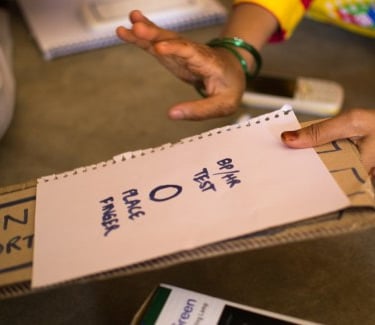
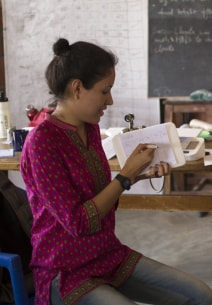

In a context where I could not speak the local language (Kannada), one of my biggest contributions was to lead ideation sessions using body movement, theatre-inspired exercises and low-cost prototyping with cardboard computers and paper screens. The design process was a physical, symbolic and expressive space for the community to take ownership of the process, and visual thinking served as a mediator to understand each other and build meaning together.
Next steps:
After this intervention, the project continued by Design Beku, a design consultancy firm led by the co-faculty on this project. In collaboration with the NGO, they further developed the dietary chart for tablet and smartphone applications. Students from Srishti and IIT-Bangalore developed the high-fi version of the app.
There were other achievements, which are harder to measure, that relate to creative confidence, exposure to systems thinking, self-reflection and community building, all of which enabled the technical components of the project to flourish, and strengthened ties within the community and built solidarity among the Health Workers to continue working together to improve their work conditions.